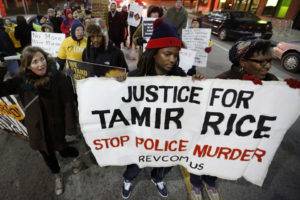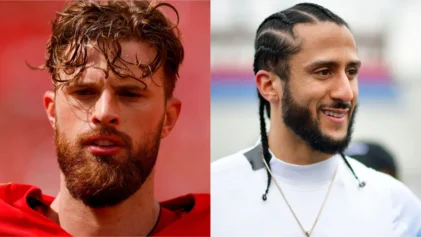
But officials in the city are preparing for the possibility that this could change very soon.
A controversial decision has been made in the case of officer Michael Brelo who stood on the hood of an unarmed couple’s care before firing 15 times into their windshield following a high speed chase.
While a judge did believe Brelo stood on the hood and shot the couple at such a close range, he refused to charge the officer with manslaughter because he said the officer genuinely believed he was in danger.
More than 100 shots had already been fired at the couple from other officers.
Now only time will tell if an indictment will come against officer Timothy Loehmann after he fatally show 12-year-old Tamir Rice seconds after arriving on the scene.
The controversial verdict and possible indictment come at a time when the Cleveland Police Department has already been under intense scrutiny following a U.S. Justice Department inquiry that slammed the entire city’s police force for incompetence and civil rights violations.
The federal probe revealed a string of incidents where police were beating suspects who had already been handcuffed or firing at suspects even when they were unarmed and served no immediate threat to anyone around them.
Despite such a tarnished record, the city has remained relatively peaceful and avoided becoming the “next Ferguson” during a time when tensions between police and the Black community are soaring.
But some officials in the city believe there are key differences between Ferguson, Baltimore and Cleveland that have kept riots at bay.
Unlike other cities, Cleveland actually did decide to indict the officer who delivered the fatal shots that took Williams’ and Russell’s lives.

In addition to the indictment, the city has actually been relatively supportive of protesters and hasn’t launched a trend of locking them up like other cities have done in the past.
“I think the mayor’s been very clear,” Dan Williams, spokesman for Mayor Frank Jackson, told CBS News. “We’re interested in making sure that those who want to protest for whatever reason do it in a responsible way. We’ve had [demonstrations] for a long time and we’ve been fair in dealing with them.”
A prime example would be when roughly 200 protesters blocked evening traffic following Tamir’s death and officers responded by redirecting traffic rather than making a wave of arrests.
Such elements help quell tensions throughout court proceedings and investigations, but the city is still very well aware of the fact that such practices may not actually help ease tensions if these two decisions don’t go the way the Black community would have hoped for.
After all, it’s one thing to keep the public calm during the investigation of a killing, but it’s another feat to ask them not to react to the killer of a 12-year-old boy or two unarmed Black citizens who receive no punishment for their crimes.
With one officer already being allowed to walk free, it isn’t clear if this case has sprinkled gunpowder all over the city as the decision to indict or not indict Loehmann could cause the final spark the city was hoping to avoid.


